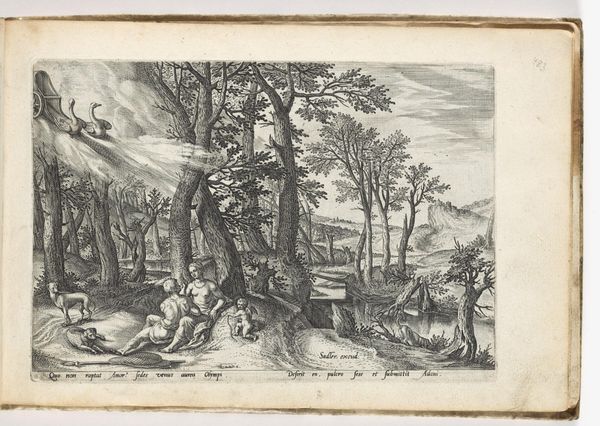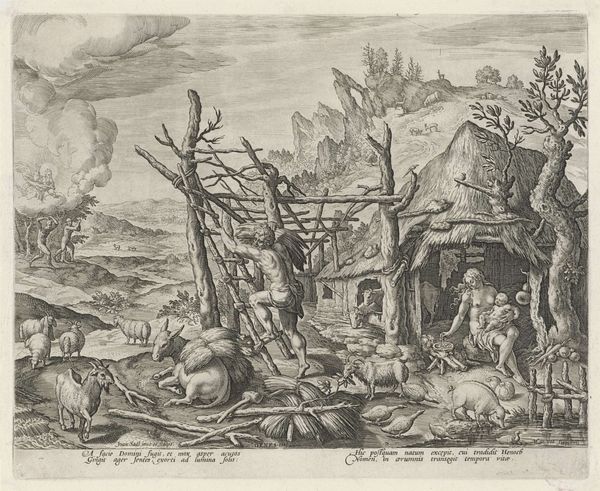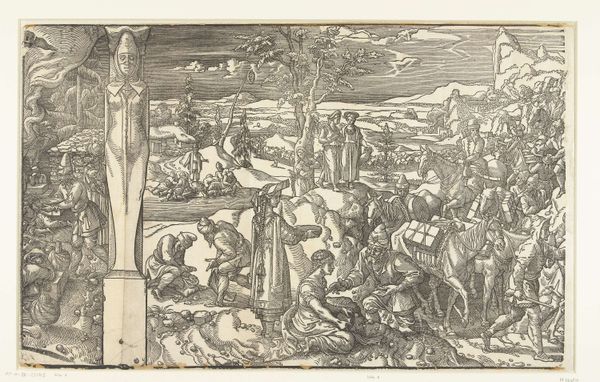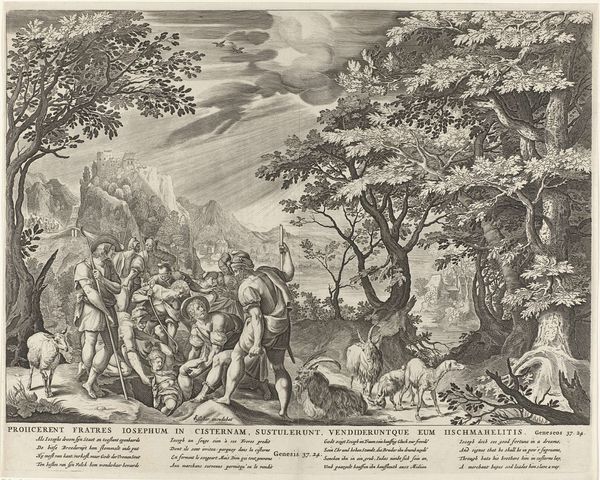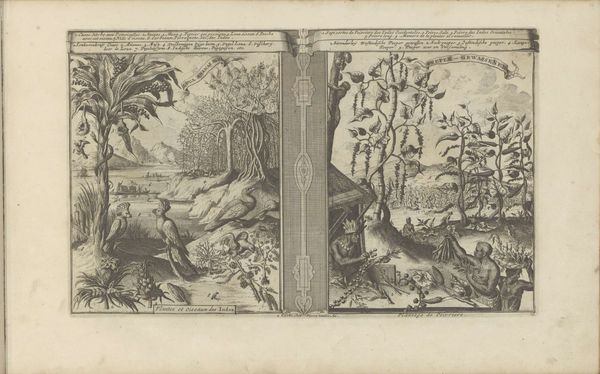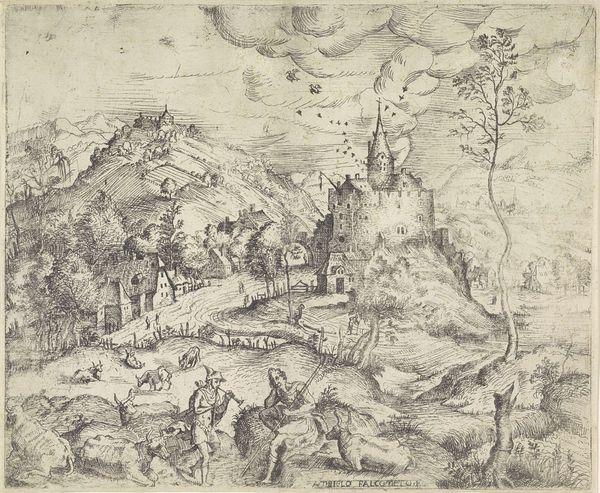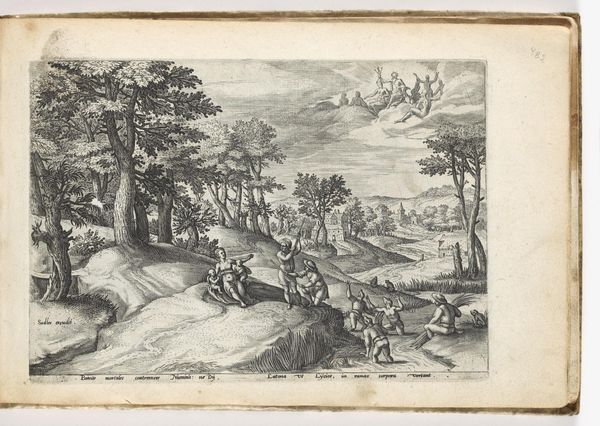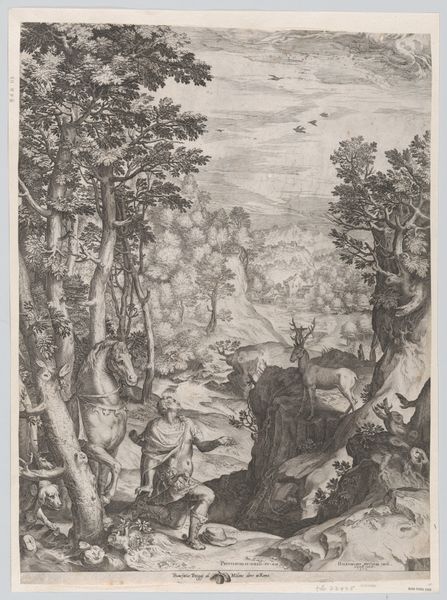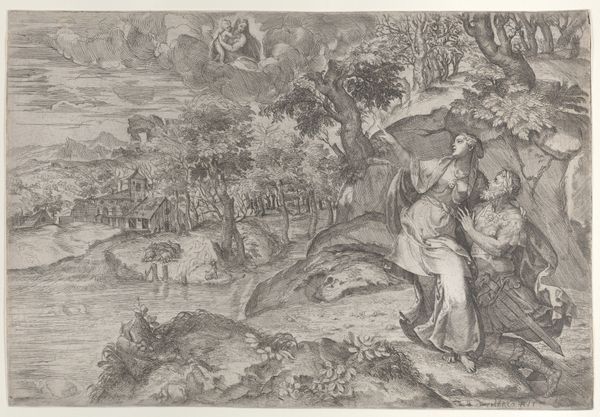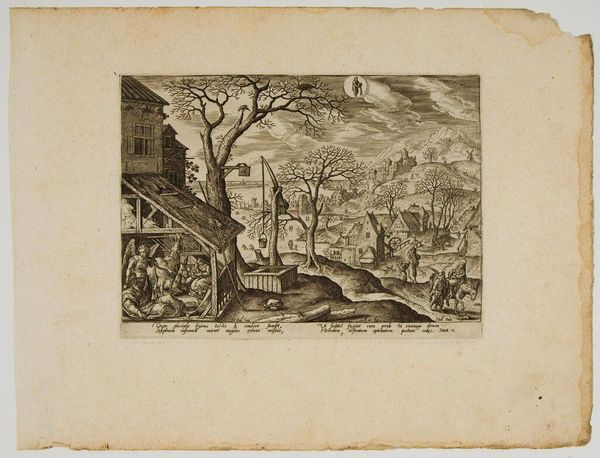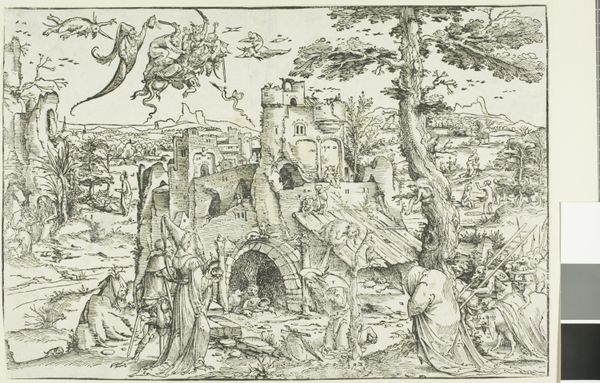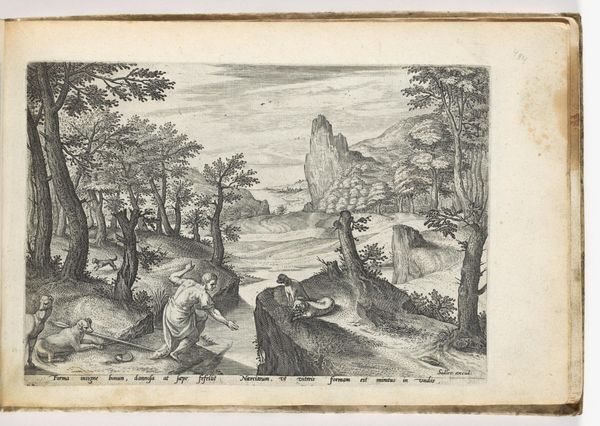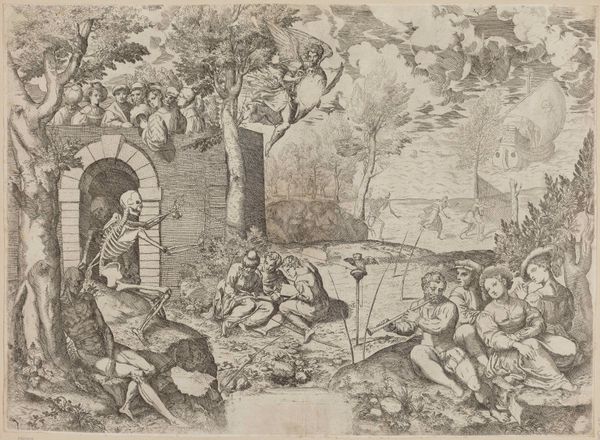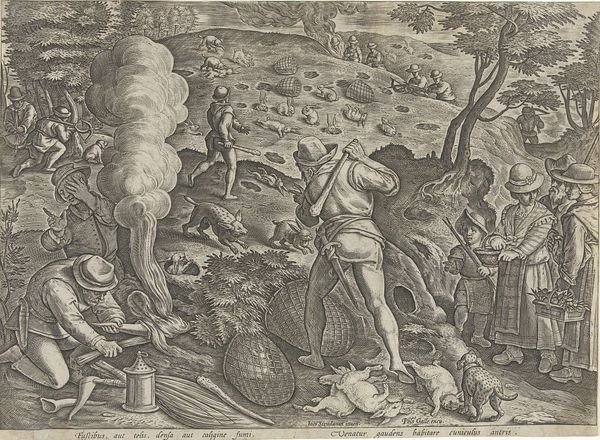
print, engraving
#
narrative-art
# print
#
landscape
#
figuration
#
coloured pencil
#
genre-painting
#
history-painting
#
northern-renaissance
#
engraving
Dimensions: height 208 mm, width 258 mm, height 538 mm, width 375 mm
Copyright: Rijks Museum: Open Domain
Johann Sadeler I made this engraving, "Kaïn, zijn vrouw en zijn zoon Henoch," in the Netherlands, sometime around 1600. The print depicts the biblical story of Cain, who murdered his brother Abel and was banished by God. The image creates meaning through visual codes and cultural references. Note how it shows Cain building a house and settling down with his family, starting society as we know it. The presence of livestock also marks Cain as a farmer, in contrast to Abel, who was a shepherd. The print suggests that Cain's actions had far-reaching consequences for the development of human society. As historians, we can use sources such as religious texts, historical accounts, and other artworks from the time to gain a deeper understanding of the context in which this image was made. Art helps us reflect on the meaning of cultural history.
Comments
No comments
Be the first to comment and join the conversation on the ultimate creative platform.
